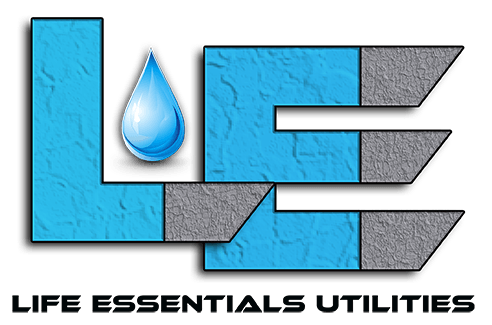Lead & Drinking Water
Facts about lead and drinking water
We are pleased to provide our customers with this important information about lead in drinking water.
Results from Lead Sampling
Because service lines, faucet fixtures, household pipes, and/or solder can contribute significantly to the lead and copper levels in tap water, we ask our customers to collect samples in their homes. These samples are collected on a routine basis (systems begin by monitoring once every six months with reductions in sampling possible that allow for monitoring once every three years) at homes that are considered vulnerable based on when they were constructed and the materials used. We do this monitoring according to the requirements of the Lead and Copper Rule and use the results to confirm that our corrosion control strategy is operating as intended.
Assessing Your Exposure to Lead
Homes built before 1930 are more likely to have lead plumbing systems. Lead pipes are a dull grey color and scratch easily revealing a shiny surface. Lead solder used to join copper pipes is a silver or grey color. If your house was built before January 1986, you are more likely to have lead-soldered joints.
The best way to know what kind of plumbing and service lines you have in your home is to hire a licensed plumber. Every home is different and it is important that you do not rely on your neighbors for information, as their home could be different.
Lead levels in drinking water are more likely to be higher if:
- your home or water system has lead pipes or has a lead service line
- your home has copper pipes with lead solder
- your home was built before 1986
AND - you have soft or acidic water
- water sits in the pipes for several hours
Minimizing Your Exposure to Lead
You cannot see, smell or taste lead, and boiling water will not remove lead. Although our water is treated to minimize the risk of lead, you can reduce your household’s exposure to lead in drinking water by following these simple steps:
- Flush the tap before drinking or cooking with water, if the water in the faucet has gone unused for more than six hours. The longer the water lies dormant in your home’s plumbing, the more lead it might contain. Flush your tap with cold water for 30 seconds to two minutes before using. To conserve water, catch the running water and use it to water your plants.
- Try not to cook with or drink water from the hot water faucet. Hot water has the potential to contain more lead than cold water. When you need hot water, heat cold water on the stove or in the microwave.
- Remove loose lead solder and debris from plumbing. In newly-constructed homes or homes in which the plumbing was recently replaced, remove the strainers from each faucet and run the water for 3 to 5 minutes. When replacing or working on pipes, be sure to use materials that are lead-free. Use of lead-based solders has been banned.
- Look for the “Lead Free” Label. When replacing or installing fixtures, look for the “lead free” label. Under the 2011 Reduction of Lead in Drinking Water Act, fixtures must have 0.25% lead or less to be considered “lead free.”
- Routinely clean faucet screens. Sediment and metals can collect in the faucet screen located at the tip of your faucets. Replace screens that are in poor condition. New screens are available at local hardware stores.
To clear the faucet screen of debris:
- Unscrew the screen.
- Separate the individual parts.
- Remove any sediment (mineral or rust build up) on the screen and other parts. If necessary, soak the parts in white vinegar for a few minutes and scrub with a brush.
- Reassemble the screen parts and reattach to faucet.
Home Treatment for Lead
The need for a home treatment device or filter is a customer-specific decision. As described above, we take steps to reduce the potential for lead to leach from your pipes into the water. Please note that certain home treatment devices, such as water softeners for example, might increase lead levels in your water. Always consult the device manufacturer for information on potential impacts to your drinking water or household plumbing.
Before purchasing a home water treatment device, consider local water quality, cost and maintenance, product performance and certifications to make sure the unit will meet your needs. Home treatment devices require regular service. When homeowners do not maintain the unit as recommended by the manufacturer, it reduces the effectiveness and possibly results in lower quality water.
Getting Your Water Tested for Lead
Lead and/or copper levels in some homes and businesses might be detected due to customer use of lead pipes, lead solder and molded metal faucets in household plumbing. Customers can choose to have their water tested at their cost at a certified laboratory.
Quick & Reliable
We are available 24/7 via email or telephone
Navigation
Working hours
- Monday
- Closed
- Tue - Fri
- -
- Sat - Sun
- Closed
After Hours & Weekends call our 24-hour number and/or email us
All Rights Reserved | Life Essentials Virginia
